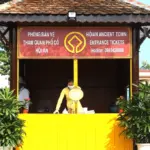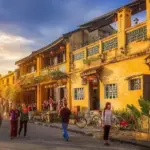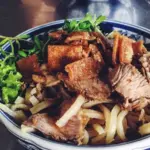Hoi An Museum of History and Culture: Introduction and Visitor Information with Ovuigo
Nestled in the heart of Hoi An Ancient Town, the Hoi An Museum of History and Culture is a must-visit for travelers seeking authentic insights into Vietnam’s heritage. Established in 1989, this museum is located at 10b Tran Hung Dao, Minh An Ward, Hoi An, Quang Nam Province with Ovuigo. It forms part of a broader museum complex that preserves the town’s illustrious past and showcases the significance of regional culture and society. The museum stands as a guardian against modernity, destruction, and forgetfulness—dedicated to the preservation of local history and customs for future generations.
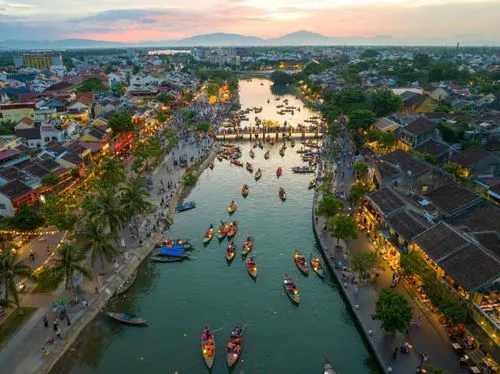
Essential Visitor Information
- Location: 10b Tran Hung Dao, Phường Minh An, Hội An, Quảng Nam
- Opening Hours: Monday to Friday, 7:30–11:00 AM and 2:00–5:00 PM. Closed on weekends.
- Ticket Price: VND 30,000 per person (subject to change)
- Contact: 0235 3862 367 | Museum official website: hoianmuseum.com
The museum offers a range of visitor services, including Vietnamese-English guided tours, accessible pathways for visitors with disabilities, and a small souvenir shop. Guests are encouraged to spend at least 60–90 minutes for a meaningful visit, engaging with exhibits and absorbing the atmosphere of the ancient town. Climate control systems preserve delicate items, underscoring the museum’s commitment to artifact preservation—vital in Vietnam’s humid climate.
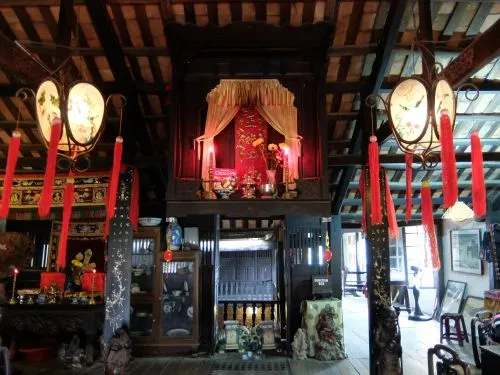
Exhibits and Artifacts Showcased at Hoi An Museum
Inside the Hoi An Museum of History and Culture, you’ll discover a collection of over 22,000 artifacts, each telling a unique story of the town and its people. Highlights include rare Cham artifacts, centuries-old ceramics, traditional costumes, ancient weapons, original manuscripts, and priceless bronze drums—symbols of the region’s cultural legacy and the beating heart of preservation.
- Cham Relics: Sculptural fragments and relics from the Cham civilization, offering glimpses into the powerful influence this ancient society had on Hoi An.
- Traditional Costumes: Exquisite garments representing the diverse ethnic groups, particularly during the festival season when lanterns—iconic symbols of Hoi An—decorate every corner.
- Ceramics and Old Coins: Displays of ceramics from local kiln sites and old coins reflect Hoi An’s role as a former trading port.
- Folk Art and Bronze Drums: Unique folk art objects and bronze drums show local creativity, religious rituals, and the community’s agricultural roots.
- Indigenous Scripts & Ancient Seals: Discover rare indigenous scripts and official seals used in past governance—a testament to the area’s administrative history.
Each item is meticulously kept under strict climate and humidity controls, reflecting the museum’s advanced restoration and preservation techniques. Multilingual display panels ensure you can access detailed information, whatever your background. The curated displays make visiting the museum one of the most immersive things to do in Hoi An.
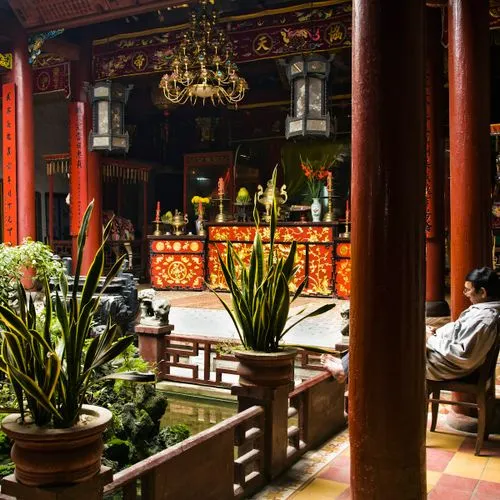
Historical and Cultural Significance of Hoi An Museum
The Hoi An Museum is more than a building—it is a living archive tracing the evolution of Hoi An and the wider Quang Nam Province from prehistoric times to the modern era. Through its rotating exhibitions and permanent collections, the museum outlines the sweeping journey of regional development, the impact of the Sa Huynh and Cham cultures, and the period of Vietnamese dynasties that shaped both the city and the nation.
The museum’s displays reveal:
- Sa Huynh Culture: Pottery, burial jars, and jewelry, illuminating the lifestyles and beliefs of early inhabitants.
- Vietnamese Dynasties: Artifacts and manuscripts offering insight into the Tran, Le, and Nguyen periods, including items from renowned local families such as the Tran family.
- Foreign Influence: Trade ceramics, Japanese and Chinese merchant documentation, and stories of international interaction. The museum preserves these legacies, ensuring that each generation can experience and understand the roots of the famed Hoi An Ancient Town.
As part of the town’s overarching commitment to heritage preservation, the museum plays a critical role in resisting neglect and immateriality. Its exhibitions actively educate the public on the values at the core of Vietnamese identity, building pride and awareness both locally and internationally.
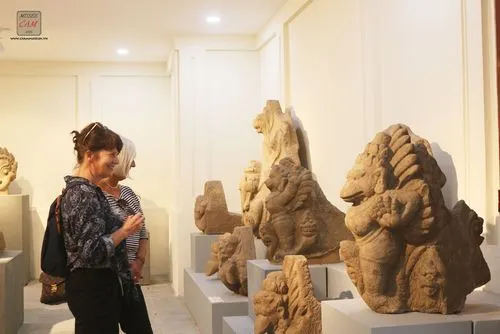
Architectural Features and Unique Characteristics of the Museum
The building itself exemplifies the traditional architecture of Hoi An—timber-framed, tile-roofed, and elegantly aged by time. Unlike modern structures prone to destruction and neglect, the museum’s premises maintain their original spatial organization, reminiscent of ancient merchant residences. The architectural style harmonizes with the surrounding Ancient Town, making the museum an integral part of the UNESCO heritage landscape.
Key architectural and curatorial features include:
- Traditional House Design: A prominent Tam Quan gate, cool courtyards, and wooden columns.
- Exhibition Layout: Thoughtfully designed to lead you through historical timeframes, from prehistory to contemporary society. The journey helps visitors understand the evolution of regional crafts, from early bronze drum casting to delicate lantern-making.
- Intangible Heritage: Beyond static objects, the museum integrates intangible culture—oral traditions, performing arts, and community practices—into interactive displays.
With every step, you sense the weight of history and the resilience of local culture. The curated environment encourages slow travel and deep engagement, providing context that goes beyond tourist brochures.
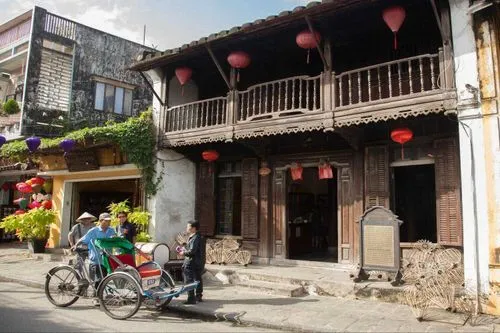
Nearby Attractions and Close Entities in Hoi An Ancient Town
A trip to the Hoi An Museum of History and Culture unlocks opportunities to discover related historical and cultural sites within walking distance:
- Japanese Covered Bridge: An iconic 16th-century structure symbolizing East-West connection.
- Sa Huynh Culture Museum: Dedicated to early local civilization, only steps away.
- Tran Family Chapel: Explore ancestral customs at a well-preserved family home (check visiting info locally).
- Hoi An Central Market: Experience daily commerce, food culture, and vibrant folk life.
- Assembly Hall of the Fujian Chinese: Admire ornate architecture and learn about the town’s multi-ethnic history.
Set aside at least half a day to combine these attractions, and check the opening hours and any entry fees (most sites: VND 20,000–40,000). This route ensures you maximize your experience in this museum complex while encountering lanterns, dragons, and age-old streets that resist change.
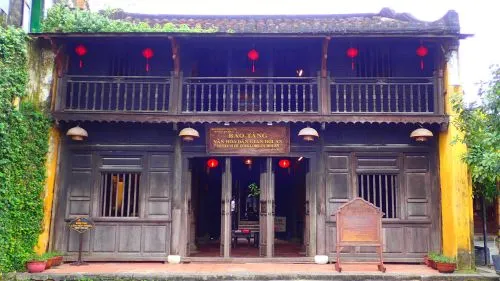
Planning Your Visit: Educational Value and Curatorial Approach
The Hoi An Museum places strong emphasis on education, accessibility, and thoughtful curatorial practice. Rotating exhibitions, bilingual interpretation, and expert-led tours make for an enriching experience, tailored to a broad spectrum of interests and ages with Ovuigo.
- Education Programs: Regular workshops, lectures, and school visits support both local and international learning.
- Curatorial Methods: Advanced preservation standards—such as controlled lighting, temperature, and humidity—protect priceless artifacts from the perils of neglect.
- Multilingual Access: All exhibits feature Vietnamese and English panels, and QR codes occasionally link to digital explanations.
- Visitor Tips: For a self-guided visit, start at the ground floor to trace chronological development, or book a guided tour for thematic insight. Allow time for exhibits on Sa Huynh and Cham cultures, which are permanently on display and foundational to Hoi An’s history.
Plan to arrive early (museum quietest before 9:00 AM), and bring cash for tickets and souvenirs. The entire experience is designed to encourage a slow, immersive exploration—living up to Hoi An’s reputation as a town that prizes memory over haste.
Experience More Than a Tour—Craft Your Own Story
We don’t run tours — we craft experiences.
Each journey is a story written just for you, designed for those who wish to explore Vietnam slowly, deeply, and meaningfully.
No fixed itineraries. No crowds.
Just you — and the moments that truly matter.
Message us on Whatsapp at +84868319161 for your personalized experience.
For additional travel inspiration, explore curated stories on ovuigo.
Discover the tranquil side of Hoi An with a special stay at The Manor Hoi An, Hola 1, or Hola 2 for a complete cultural immersion.

